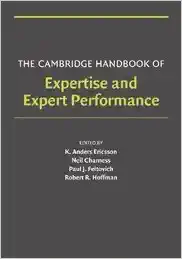Michael Sean Quinn, Ph.D, J.D., Etc.
2630 Exposition Blvd #115
Austin, Texas 78703
(o) 512-296-2594
(c) 512-656-0503
www.michaelseanquinn.com
(Resumes Found Here)
I. Insurers
must treat the interests of its insured’s as at least equal to their own. This is often called the “special
relationship.” It undermines the “arm’s length” idea. (First Axiom)
must treat the interests of its insured’s as at least equal to their own. This is often called the “special
relationship.” It undermines the “arm’s length” idea. (First Axiom)
II.
Insurers
have a duty to look for coverage. (Second Axiom)
Insurers
have a duty to look for coverage. (Second Axiom)
III.
Insurers
must conform to state law, so adjusters must know relevant state law.
Insurers
must conform to state law, so adjusters must know relevant state law.
IV.
All
insurer conduct in every adjustment must be objective in every step of the way.
An insurer must avoid bias of mind and method.
The same is true of prejudice.
V.
All
adjustment activities by an insurer must be thorough, and this applies to
investigation, study, reasoning, all types of review and decision-making.
All
insurer conduct in every adjustment must be objective in every step of the way.
An insurer must avoid bias of mind and method.
The same is true of prejudice.
V.
All
adjustment activities by an insurer must be thorough, and this applies to
investigation, study, reasoning, all types of review and decision-making.
VI.
When
an insurer is in doubt, it should seek reasonable and objective counseling.
When
an insurer is in doubt, it should seek reasonable and objective counseling.
VII.
All
adjusters, of whatever rank, must have read the relevant policy, have at
least relevant knowledge, and/or have understood it to the best
extent possible, kept it in mind, and be thoroughly in conformity with it in
investigation and decision-making about the claim.
All
adjusters, of whatever rank, must have read the relevant policy, have at
least relevant knowledge, and/or have understood it to the best
extent possible, kept it in mind, and be thoroughly in conformity with it in
investigation and decision-making about the claim.
VIII.
Applicable
parts of the policy have to be understood. To be understood, all
“understanding” requires truth and knowledge.
Therefore, one must know how to interpret the policy. This rule applies to all adjusters; however,
the more overarching the role of an adjuster, the more extensive and deeper the
understanding must be. (See #9)
Applicable
parts of the policy have to be understood. To be understood, all
“understanding” requires truth and knowledge.
Therefore, one must know how to interpret the policy. This rule applies to all adjusters; however,
the more overarching the role of an adjuster, the more extensive and deeper the
understanding must be. (See #9)
IX.
No
adjustment should proceed on the basis of an unclear policy. This might result because it is incoherent,
because the policy is so obscure that it cannot be consistently and reasonably
understood, because it is repeatedly so vague that “anything may go,” or
because the policy is repeatedly ambiguous as too central. Any unclear sections
must be interpreted in favor of an insured. This includes vagueness, ambiguity,
and incoherence.
No
adjustment should proceed on the basis of an unclear policy. This might result because it is incoherent,
because the policy is so obscure that it cannot be consistently and reasonably
understood, because it is repeatedly so vague that “anything may go,” or
because the policy is repeatedly ambiguous as too central. Any unclear sections
must be interpreted in favor of an insured. This includes vagueness, ambiguity,
and incoherence.
X.
An
insurer may never misrepresent any nontrivial proposition, to any
insured under any circumstances.
An
insurer may never misrepresent any nontrivial proposition, to any
insured under any circumstances.
XI.
An
insurer must always treat an insured fairly in every phase of every
adjustment. “Fair” has multiple meanings and all of them apply. Keep in mind that the phrases “good faith” and “fair dealing are usually conjoined, so it’s “good faith and fair dealing.”
An
insurer must always treat an insured fairly in every phase of every
adjustment. “Fair” has multiple meanings and all of them apply. Keep in mind that the phrases “good faith” and “fair dealing are usually conjoined, so it’s “good faith and fair dealing.”
XII.
Insurers
must treat insureds equitably in the context of adjustment. “Equity” and
“equitable” are broad, deep, and complex concepts.
Insurers
must treat insureds equitably in the context of adjustment. “Equity” and
“equitable” are broad, deep, and complex concepts.
XIII.
An
insurer’s decisions may not be based on invalid arguments. The more obvious the fallacy, the worse it
gets.
An
insurer’s decisions may not be based on invalid arguments. The more obvious the fallacy, the worse it
gets.
XIV.
Insurers
and their adjusters are required to follow or act in accordance with that
insurer’s adjustment rules or guidelines. This presupposes that they understand
them.
Insurers
and their adjusters are required to follow or act in accordance with that
insurer’s adjustment rules or guidelines. This presupposes that they understand
them.
XV.
Insurers
should have internal rules or guidelines for adjustments. Adjusters should be
well trained as to principles of adjustment.
Insurers
should have internal rules or guidelines for adjustments. Adjusters should be
well trained as to principles of adjustment.
XVI.
Insurers
in adjustments should keep an insured informed as to the direction of its
thinking and/or at least the drift of company thinking and why the insurer is
heading in that direction.
Insurers
in adjustments should keep an insured informed as to the direction of its
thinking and/or at least the drift of company thinking and why the insurer is
heading in that direction.
XVII.
The
process of adjustment does not end with a denial letter or with the
existence of litigation. Nor is it ended
by other forms of self-perceived and self-asserted dispute resolution.
The
process of adjustment does not end with a denial letter or with the
existence of litigation. Nor is it ended
by other forms of self-perceived and self-asserted dispute resolution.
XVIII.
Adjustment
—from start to finish and for each successive event therein—must be prompt. What counts as “prompt” depends in part on the nature and size of the claim. Conflicts with rigid or inflexible-looking time schedules in statutes can be a real problem for insurers.
Adjustment
—from start to finish and for each successive event therein—must be prompt. What counts as “prompt” depends in part on the nature and size of the claim. Conflicts with rigid or inflexible-looking time schedules in statutes can be a real problem for insurers.
XIX.
The
relevant claim(s) file should contain records stating the content of the
adjustment and explicit indications of observations, relevant impressions and
analyses of person’s involved, meaningful dialogue, discussions of the same
matters, and records regarding debates. All internal communiqués should be
included.
The
relevant claim(s) file should contain records stating the content of the
adjustment and explicit indications of observations, relevant impressions and
analyses of person’s involved, meaningful dialogue, discussions of the same
matters, and records regarding debates. All internal communiqués should be
included.
XX.
An
insurer may never rely on its own freely-made underwriting error as
grounds for denying a claim. Standardized policies are the safest. Technically, may rely on its own underwriting decision, but this is inherently dangerous. Individualized underwriting decisions will have files backing them up, if they are sound. The contents of those files better be good.
An
insurer may never rely on its own freely-made underwriting error as
grounds for denying a claim. Standardized policies are the safest. Technically, may rely on its own underwriting decision, but this is inherently dangerous. Individualized underwriting decisions will have files backing them up, if they are sound. The contents of those files better be good.
XXI.
An
insurer may not rely on sources of evidence which do not have established
relevant reliability.
An
insurer may not rely on sources of evidence which do not have established
relevant reliability.
XXII.
Relying
on unreliable evidence in dealing with claims is symptomatic of
IBF. This is dramatically true if the
insurer knows or should know that the evidence is from an unreliable source.
Relying
on unreliable evidence in dealing with claims is symptomatic of
IBF. This is dramatically true if the
insurer knows or should know that the evidence is from an unreliable source.





Recent Comments